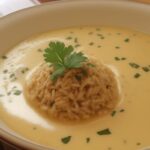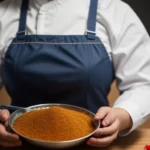Turkish cuisine is a rich and diverse culinary tradition that has been influenced by the many cultures that have passed through the region throughout history. From the savory kebabs to the sweet baklava, Turkish cuisine is a delightful fusion of flavors that will leave your taste buds begging for more. In this article, we will explore the rich flavors of Turkish cuisine and the culinary delights that await you in this amazing country.
1. A Brief Overview of Turkish Cuisine
Turkish cuisine is a fusion of Middle Eastern, Mediterranean, Central Asian, and Balkan flavors. It is characterized by its use of fresh and locally sourced ingredients, as well as the bold and aromatic spices that are used in many of its dishes. Some of the most popular ingredients in Turkish cuisine include lamb, beef, chicken, eggplant, tomatoes, peppers, yogurt, and rice.
2. Meze: A Turkish Culinary Tradition
Meze is a traditional Turkish dining experience that is similar to the Spanish tapas. It consists of a series of small dishes that are served before the main meal, allowing diners to sample a variety of flavors and textures. Meze dishes can include stuffed grape leaves, hummus, yogurt-based dips, and grilled vegetables.
3. Kebabs: The King of Turkish Cuisine
Kebabs are perhaps the most iconic dish in Turkish cuisine, and for good reason. These skewered and grilled meats are flavored with a blend of aromatic spices and herbs, resulting in tender and juicy meat that is bursting with flavor. Some popular kebabs in Turkey include the Adana kebab, shish kebab, and doner kebab.
4. Borek: A Delicious Pastry Treat
Borek is a savory pastry that is made from thin layers of dough that are filled with various ingredients such as cheese, meat, or vegetables. It is then baked until golden and crispy, resulting in a delicious and satisfying dish that can be enjoyed as a snack or a main course.
5. Turkish Breakfast: A Feast for the Senses
Turkish breakfast is a true feast for the senses, featuring an array of dishes that are both sweet and savory. A typical Turkish breakfast can include fresh bread, olives, tomatoes, cucumbers, cheeses, honey, and jams, as well as eggs cooked in various ways. It is a leisurely and social meal that is meant to be enjoyed with family and friends.
6. Ottoman Cuisine: A Taste of History
The Ottoman Empire has had a significant influence on Turkish cuisine, and many of the dishes that are enjoyed in Turkey today have their roots in Ottoman cooking. Some popular Ottoman dishes include pilaf, stuffed vegetables, and sweet pastries such as baklava and kunefe.

7. Lahmacun: A Turkish Pizza
Lahmacun is a delicious and flavorful Turkish pizza that is made from a thin and crispy dough that is topped with a spicy mix of minced meat, tomatoes, peppers, and herbs. It is then baked until golden and served with a squeeze of lemon juice and a sprinkle of fresh parsley.
8. Seafood Delights: Fresh from the Aegean and Mediterranean Seas
Turkey is surrounded by the Aegean and Mediterranean Seas, and as a result, seafood plays a prominent role in Turkish cuisine. Some popular seafood dishes in Turkey include grilled fish, shrimp casserole, and stuffed calamari. These dishes are often flavored with Mediterranean herbs and spices, resulting in a fresh and flavorful meal.
9. Vegetarian Delights: A Feast for Plant-Based Eaters
Vegetarian cuisine is also prevalent in Turkey, with many dishes that are based on fresh vegetables, legumes, and grains. Some popular vegetarian dishes in Turkey include Imam bayildi, a dish made from eggplant, tomatoes, and onions, as well as lentil soup, stuffed grape leaves, and a variety of salads and dips.
10. Turkish Delights: A Sweet Treat
No exploration of Turkish cuisine would be complete without mentioning Turkish delights. These gelatinous candies are flavored with various fruits, nuts, and spices, resulting in a sweet and indulgent treat that is popular throughout the Middle East. Some popular flavors of Turkish delight include rose, lemon, and pistachio.
11. Turkish Coffee: An Essential Experience
No visit to Turkey would be complete without trying a cup of Turkish coffee. This strong and aromatic coffee is brewed using finely ground coffee beans and water, resulting in a thick and rich cup of coffee that is often served with a small glass of water and a piece of Turkish delight.
12. Regional Flavors: A Culinary Journey Across Turkey
Each region of Turkey has its own unique culinary traditions and flavors. In the Black Sea region, dishes are often flavored with anchovies, cornmeal, and hazelnuts. In the Aegean region, seafood dishes are prevalent, while in the Eastern region, spices such as sumac, saffron, and cinnamon are commonly used.
13. Street Food: A Taste of the Local Cuisine
One of the best ways to sample the flavors of Turkish cuisine is by trying the street food that is sold in markets and stalls throughout the country. Some popular street foods in Turkey include simit, a sesame-seed bread ring, kokorec, grilled lamb intestines, and midye dolma, stuffed mussels.
14. Traditional Festive Dishes: A Celebration of Culture
Turkish cuisine plays a prominent role in the country’s cultural and religious festivals. During Ramadan, for example, families break their fast with a meal called iftar, which often includes dishes such as lentil soup, kebabs, and baklava. During Eid al-Adha, families often enjoy a feast of grilled meat, rice, and stuffed vegetables.
15. Cooking Classes and Culinary Tours: A Hands-On Experience
For those who want to truly immerse themselves in the rich flavors of Turkish cuisine, participating in a cooking class or culinary tour can be a rewarding experience. These experiences give you the opportunity to learn about traditional cooking techniques, sample local ingredients, and create your own delicious Turkish dishes under the guidance of a skilled chef.
In conclusion
Turkish cuisine is a delightful fusion of flavors and aromas that will leave you craving more. From the savory kebabs to the sweet baklava, the culinary delights of Turkey are sure to tantalize your taste buds and leave you with a newfound appreciation for this rich and diverse culinary tradition. So, why not embark on a culinary journey through Turkey and explore the amazing flavors that await you in this incredible country?
FAQs about “Exploring the Rich Flavors of Turkish Cuisine”
- What defines Turkish cuisine, and what sets it apart from other culinary traditions? Turkish cuisine is characterized by its rich and diverse flavors, influenced by centuries of history and cultural exchange. It blends elements from Mediterranean, Middle Eastern, Central Asian, and Balkan cuisines, resulting in a unique and varied culinary tradition. Turkish cuisine is known for its abundant use of fresh herbs, spices, and vegetables, as well as its emphasis on grilling and slow-cooking techniques.
- What are some essential ingredients in Turkish cooking, and where can I find them? Essential ingredients in Turkish cuisine include staples like olive oil, yogurt, bulgur, and lamb. Spices such as cumin, paprika, and sumac are also commonly used to add depth of flavor to dishes. You can find these ingredients in most grocery stores, but for a wider selection and authenticity, consider visiting specialty Turkish markets or sourcing from online retailers specializing in Mediterranean foods.
- Are there vegetarian or vegan options within Turkish cuisine? Yes, Turkish cuisine offers a wealth of vegetarian and vegan options that are both delicious and satisfying. Dishes like stuffed grape leaves (dolma), eggplant moussaka (imam bayildi), and lentil soup (mercimek çorbası) are popular choices. Additionally, many meze (appetizer) dishes, such as hummus, baba ghanoush, and tabbouleh, are naturally vegetarian or vegan.
- How can I recreate Turkish dishes at home if I’m not familiar with the cuisine? Recreating Turkish dishes at home can be an enjoyable culinary adventure. Start by experimenting with simple recipes like köfte (meatballs), börek (savory pastries), or közlenmiş biber salatası (roasted red pepper salad). Many online resources, cookbooks, and cooking shows provide detailed instructions and helpful tips to guide you through the process. Don’t be afraid to explore different Turkish ingredients and flavors to tailor the dishes to your taste preferences.
- Are there any cultural aspects or traditions associated with Turkish cuisine? Turkish cuisine is deeply intertwined with Turkish culture and traditions, often serving as a focal point for social gatherings and celebrations. Meals are typically enjoyed leisurely, with family and friends, emphasizing hospitality and generosity. Traditional Turkish cooking methods, such as grilling kebabs over charcoal or slow-cooking stews in clay pots, have been passed down through generations, preserving the authenticity of Turkish flavors. Additionally, certain dishes hold symbolic significance during holidays and special occasions, reflecting the rich cultural heritage of Turkey.
Advantages:
- Cultural exploration: The title suggests an exploration of Turkish cuisine, which can promote cultural understanding and appreciation among readers.
- Culinary diversity: Turkish cuisine is known for its rich variety of flavors, ingredients, and cooking techniques, offering readers a diverse culinary experience.
- Gastronomic adventure: Readers can anticipate embarking on a culinary journey through the flavors of Turkey, discovering new tastes and dishes along the way.
- Educational value: Exploring Turkish cuisine provides an opportunity for readers to learn about the history, traditions, and cultural significance of various Turkish dishes.
- Inspiration for cooking: The title may inspire readers to try cooking Turkish dishes at home, expanding their culinary repertoire and experimenting with new flavors.
Disadvantages:
- Generalization: The term “Turkish cuisine” encompasses a wide range of culinary traditions across different regions of Turkey, potentially oversimplifying the diversity within Turkish cooking.
- Lack of specificity: The title does not specify which aspects of Turkish cuisine will be explored, leaving readers uncertain about the focus or depth of the content.
- Potential cultural appropriation: Without proper context and respect for the origins of dishes, exploring Turkish cuisine could risk appropriating cultural elements without understanding their significance.
- Accessibility: Some ingredients and cooking techniques in Turkish cuisine may be challenging to find or replicate for readers outside of Turkey, limiting the practicality of the exploration.
- Dietary restrictions: Turkish cuisine often includes ingredients like dairy, meat, and grains, which may not be suitable for individuals with dietary restrictions or preferences, potentially alienating some readers.
















